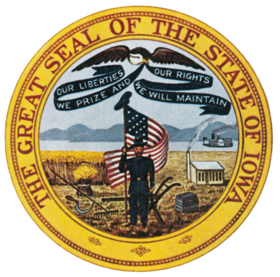Food-borne Illness Introduction Activity
Resource overview
LEARNING OUTCOMES:
- Students will recognize how to prevent food-borne illnesses.
- Students will be able to compare different types of food-borne illnesses.
- Students will create a presentation about a food borne illness for their classmates to learn from.
- Students will work cooperatively in groups to teach about a food borne illness to their classmates.
EDUCATIONAL STANDARDS ADDRESSED:
National Standards for Family and Consumer Sciences Education
Food Production and Services
- 8.2.1 Identify characteristics of major food borne pathogens, their role in causing illness, foods involved in outbreaks, and methods of prevention.
- 8.2.8 Analyze current types of cleaning materials and sanitizers for proper uses and safety hazards.
TIME REQUIRED FOR LESSON:
45 minutes to one hour
TIME REQUIRED FOR TEACHER PREPARATION:
Less than ten minutes
MATERIALS FOR LESSON:
- Computer with Internet
- Collaboration Software or Web Tool
- Presentation Software or Web Tool
OVERVIEW OF LESSON:
In this blended/online learning lesson the students will begin exploring food borne illnesses and discuss the importance of food borne illness awareness and prevention. Students will research a food borne illness with a small group of peers and create a multimedia presentation about that illness. The presentation will include the following:
-Onset time after ingesting
-Signs and symptoms
-How long it lasts
-What foods cause the illness
-How to prevent the illness
Lesson Timeline
Online learning prior to class: Watch the following video on food borne illnesses:
1. Ask the students to fill out a K.W.L. chart on food borne illness. Click here for an example Padlet. You will want to create your own to use with your students.
2. Have the students watch the following video. Click here for the video. Notice that I created this in PlayPosIt. This video can be found in YouTube at the following address: https://www.youtube.com/watch?v=2QQvhFPZedM You may want to create different questions and pause points for your students.
Face-to-Face Day 1:
1. Assign students in groups of 3-4.
2. Give each group a food borne illness to research and report on to the class. Possible illnesses may include: Botulism, Campylobacter, Cyclospora, E. Coli, Listeria, Norovirus, Salmonella, Hepatitis A.
3. Students will begin researching and collaborating a presentation about their assigned illness. If you want your students to use Google Slides for this presentation, click here for a possible template.
Online learning prior to second class:
1. Have students complete the following online discussion thread. They must comment on at least 3 other peer threads.
"Using a newspaper or internet journal article, find an article about a case or outbreak of food borne illness: Pretend you are a food scientist trying to discover why the person/people got sick, and write a two-five paragraph response answering the four questions below. Include a copy or link of the newspaper article with your report."
1. What food caused the outbreak?
2. Describe the pathogen that caused people to get sick. What is its scientific name? What kinds of food can it be found in?
3. How do you think the pathogen could have gotten into the food in the first place?
4. What was the result of the case/outbreak? Did anyone get sick? Did anyone die?
Face-to-Face Day 2:
Student use the class time to collaborate, research, and begin constructing the presentation.
Online learning prior to third class:
Continue researching and collaborating on the presentations. They will be presented the following class time.
Face-to-Face Day 3:
Students will present their food borne illness presentations to the class. These presentations will be shared in an online LMS portal or by Google Docs so that everyone will have access to look at the information in the future.
